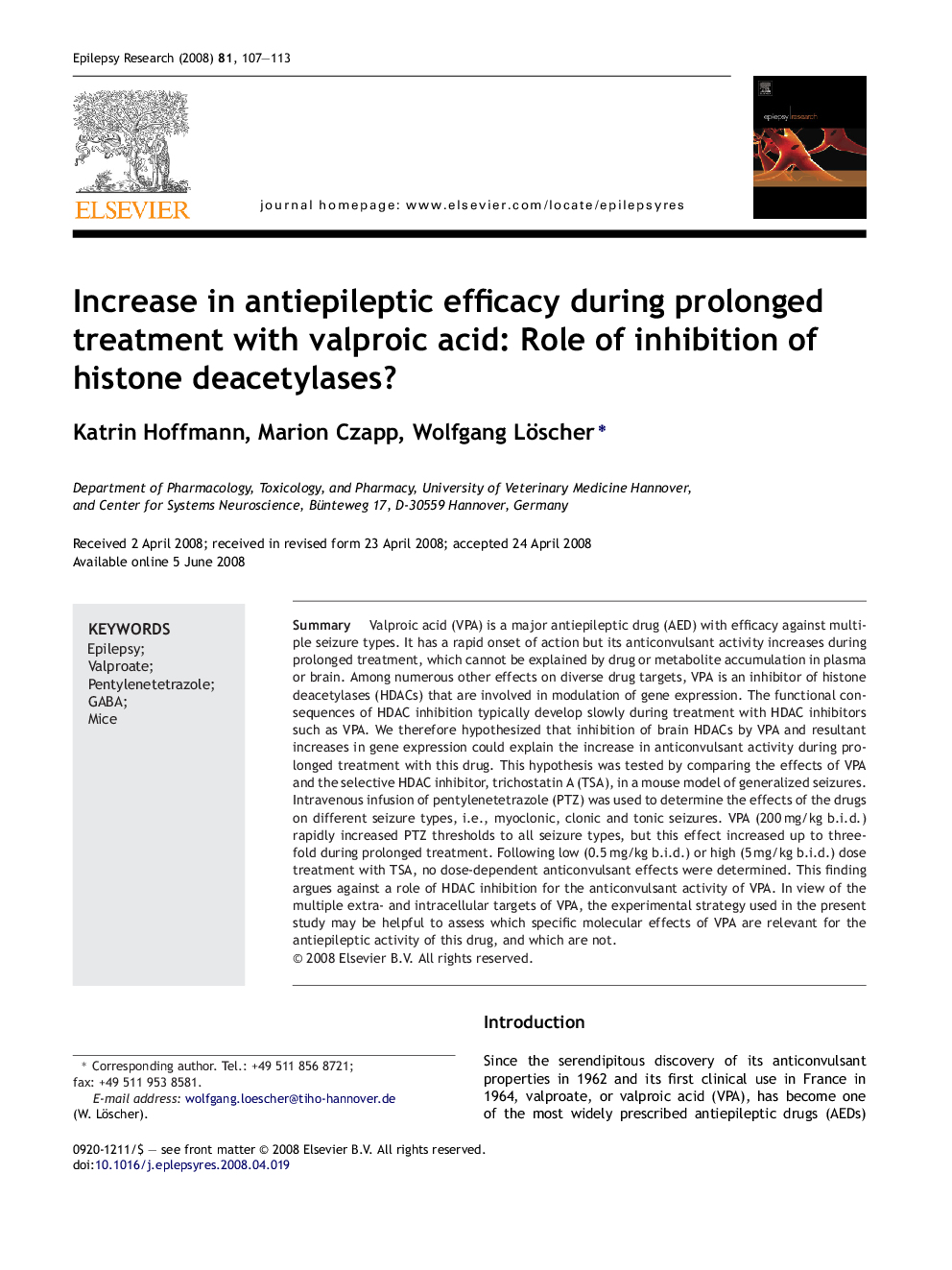| Article ID | Journal | Published Year | Pages | File Type |
|---|---|---|---|---|
| 6016329 | Epilepsy Research | 2008 | 7 Pages |
Abstract
Valproic acid (VPA) is a major antiepileptic drug (AED) with efficacy against multiple seizure types. It has a rapid onset of action but its anticonvulsant activity increases during prolonged treatment, which cannot be explained by drug or metabolite accumulation in plasma or brain. Among numerous other effects on diverse drug targets, VPA is an inhibitor of histone deacetylases (HDACs) that are involved in modulation of gene expression. The functional consequences of HDAC inhibition typically develop slowly during treatment with HDAC inhibitors such as VPA. We therefore hypothesized that inhibition of brain HDACs by VPA and resultant increases in gene expression could explain the increase in anticonvulsant activity during prolonged treatment with this drug. This hypothesis was tested by comparing the effects of VPA and the selective HDAC inhibitor, trichostatin A (TSA), in a mouse model of generalized seizures. Intravenous infusion of pentylenetetrazole (PTZ) was used to determine the effects of the drugs on different seizure types, i.e., myoclonic, clonic and tonic seizures. VPA (200Â mg/kg b.i.d.) rapidly increased PTZ thresholds to all seizure types, but this effect increased up to threefold during prolonged treatment. Following low (0.5Â mg/kg b.i.d.) or high (5Â mg/kg b.i.d.) dose treatment with TSA, no dose-dependent anticonvulsant effects were determined. This finding argues against a role of HDAC inhibition for the anticonvulsant activity of VPA. In view of the multiple extra- and intracellular targets of VPA, the experimental strategy used in the present study may be helpful to assess which specific molecular effects of VPA are relevant for the antiepileptic activity of this drug, and which are not.
Related Topics
Life Sciences
Neuroscience
Neurology
Authors
Katrin Hoffmann, Marion Czapp, Wolfgang Löscher,
